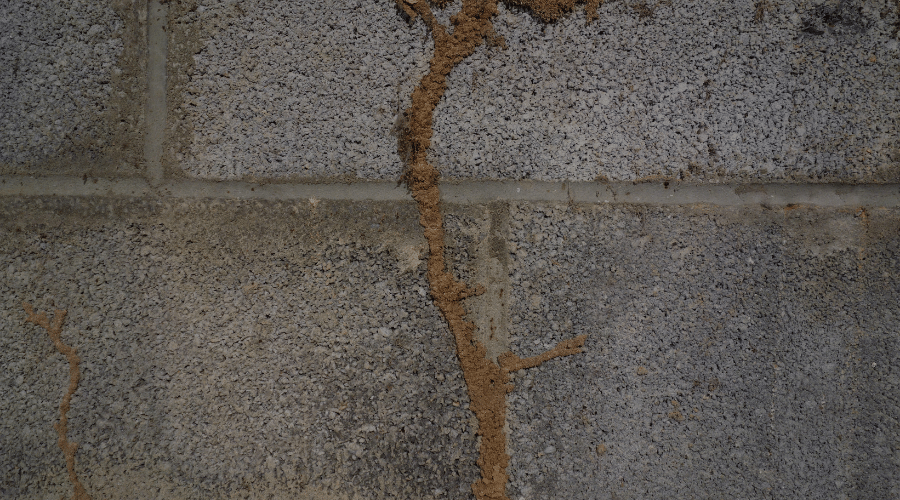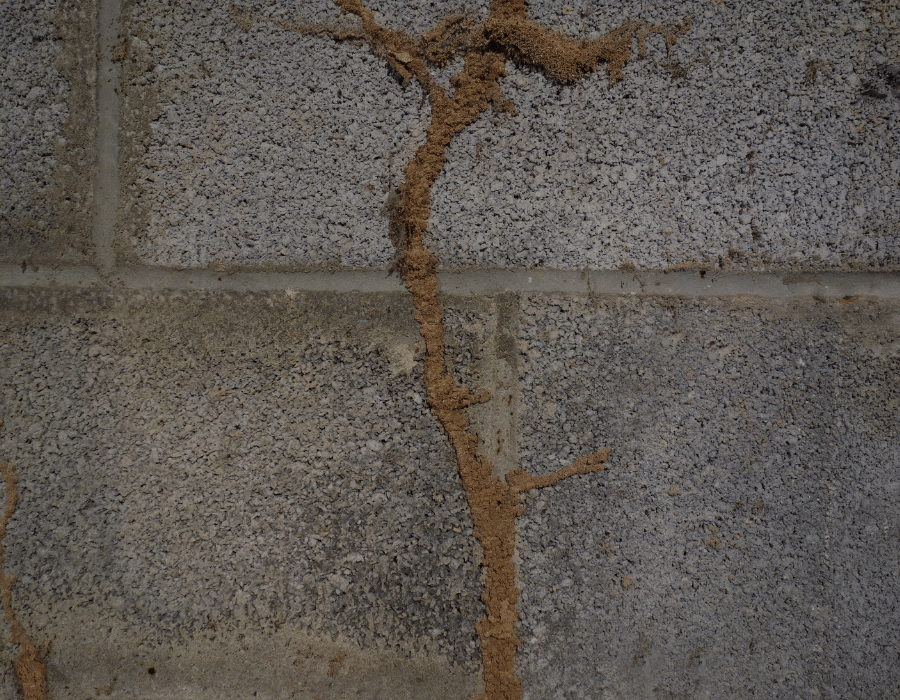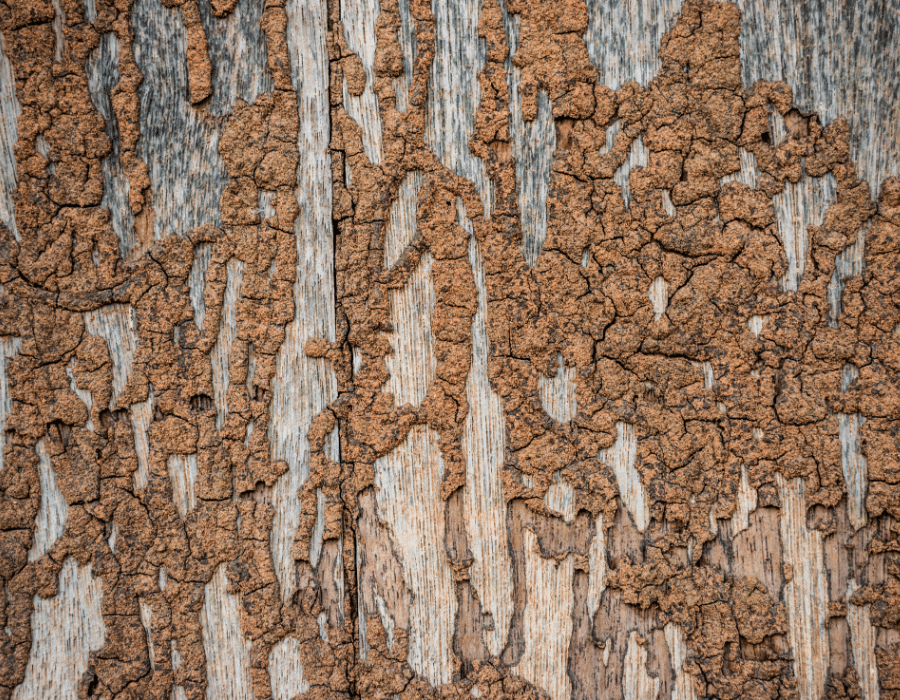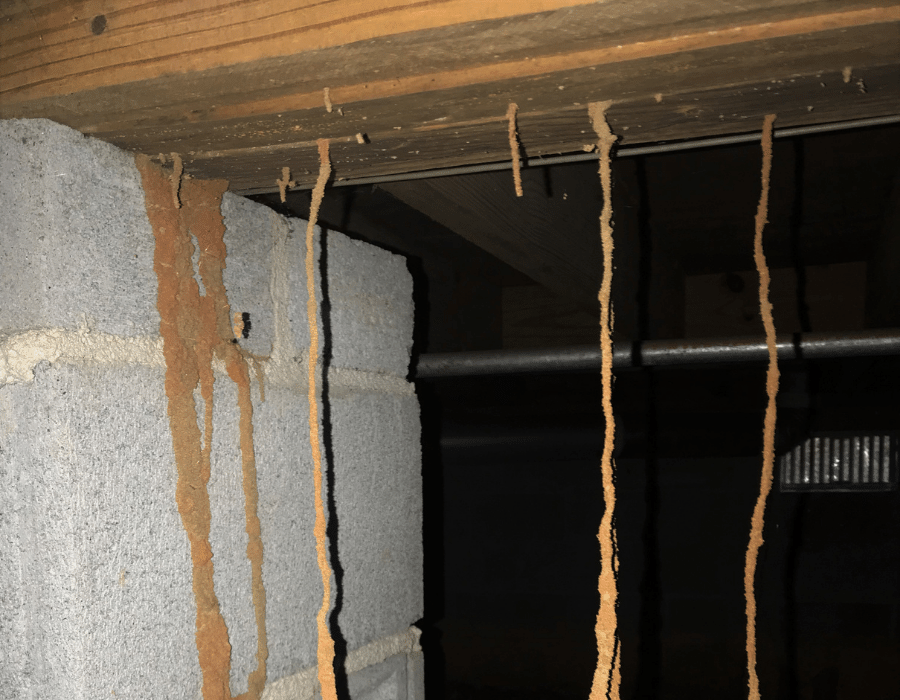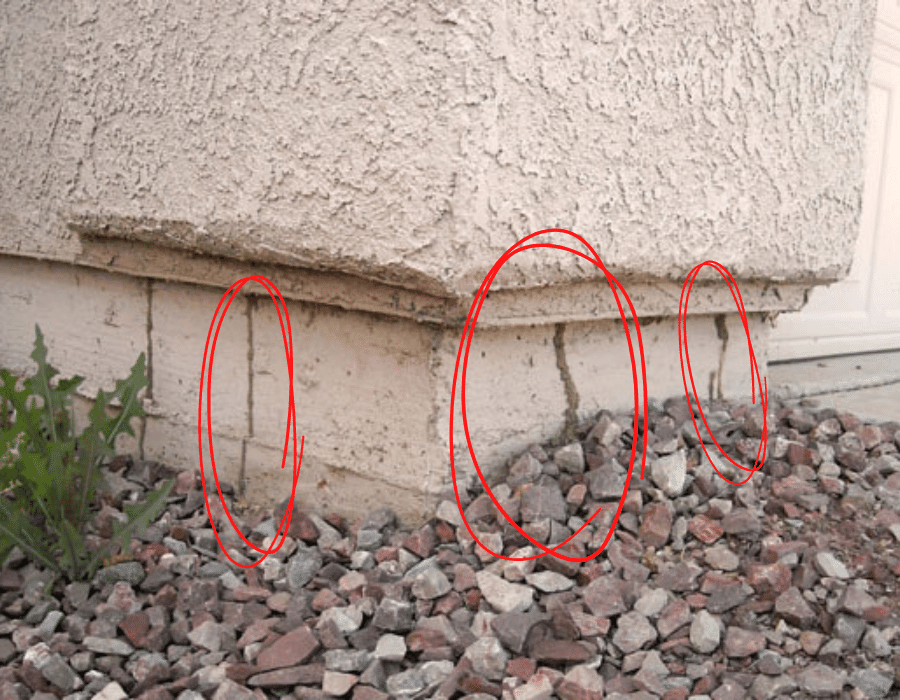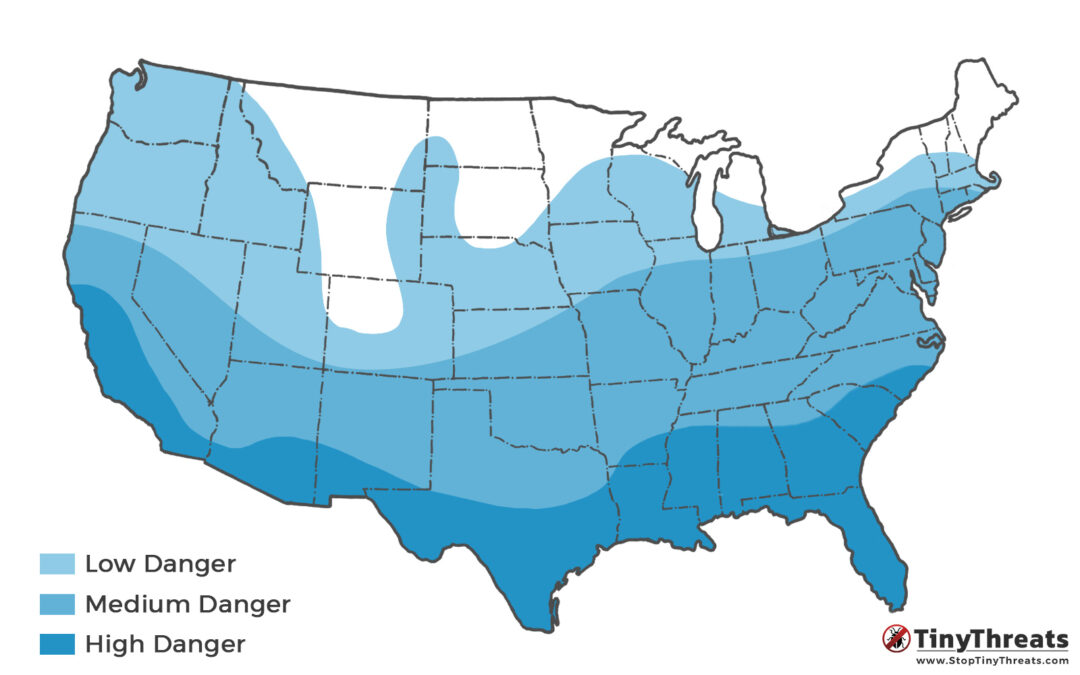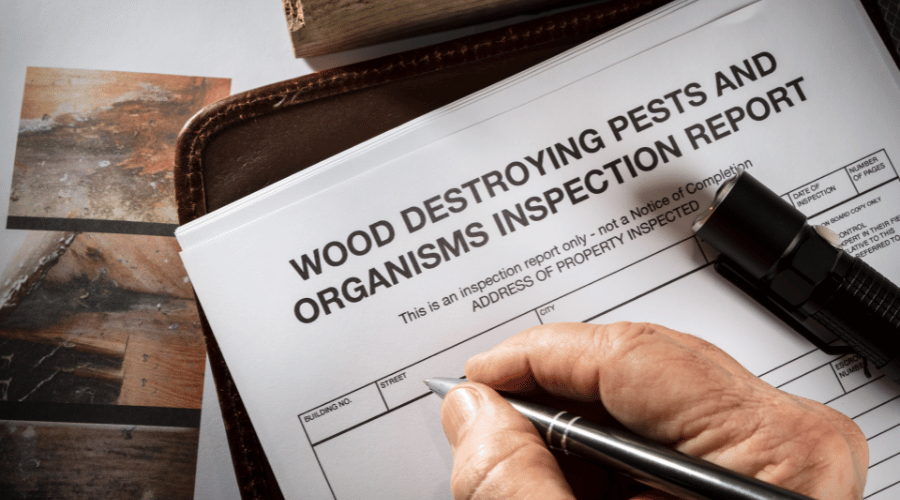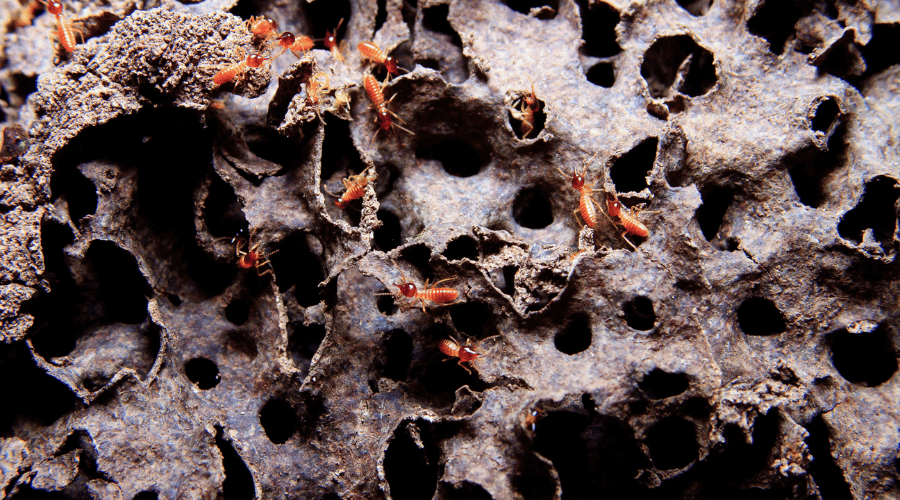One of the first typical signs of a subterranean termite infestation are their mud tubes. The correct name would be “shelter tubes”, but most people refer to them as termite trails or mud tubes.
If you find termite mud tubes on the outside walls of your house (or even on the inside), it means that you have an active infestation.
Subterranean termites are the most destructive species and should not be taken lightly. If you see these signs of termite activity, call an exterminator.
Table of Contents
What are Termite Mud Tubes?
Termite mud tubes are the paths that they create as they search for food and moisture. The insects use these clay-like tunnels to protect themselves from predators and exposure to weather.
Subterranean termites are the main species that build mud tubes. That’s why you mainly find them starting somewhere near the soil, and then path up the walls until they found a good opening.
They prefer to dig tunnels in wood, but will build these shelter tubes to get past concrete, brick, or stone walls.
What do termite Mud Tubes look like?
Termite tubes are brown, but can be lighter or darker depending on the wood used in building them. They are usually between about 1/8th and 1/2 of an inch wide, but can be quite long.
These termite trails are pretty easy to recognize, as they are mostly found on concrete or brick walls, and sometimes are found hanging down from a ceiling. Hanging mud tubes only occur in advanced infestations.
What NOT to do about Mud Tubes
A common reaction from homeowners is a DIY approach. While you can fight a termite infestation on your own, you have to know what you are doing.
What you should not do is break open the mud tubes. Termites will quickly rebuild them and you will only drive them deeper into your home.
Spraying pesticides onto or into them is another common mistake people make.
The reason is simple: The termites will feel threatened and move somewhere else. But not another home – rather, another part in your home. That means you’ll have to find them, first, before you can start treatment.
What you SHOULD do if you find Mud Tubes
Unless you’re already experienced with termites, your best option is usually to call an expert, at least for a professional assessment. Exterminators may be expensive, but the damage that termites can cause is much higher.
Mud tubes are built by subterranean termites, the most destructive species in North America. The best way to stop them is professional treatment.
One big difficulty is that these termites build their colony underground – which makes it hard to reach and stop them.
Another important note: You should also act fast, as termites can spread and multiply quite fast. If they have just arrived in your home, treatment might be quick and easy. Just a few months later, it might get much more expensive as the damage gets more severe.
Treatment Options
Against subterranean termites, the most common treatments your pest control company will recommend are bait traps and soil treatment.
Both will eliminate termites and can wipe out the entire colony. Both treatments also have a long-lasting effect, protecting your home from future attacks for about 5-10 years.
The subterranean species can have colonies as large as 2-3 million worker termites. At this size, they can eat about 2 pounds of wood per week. At this pace, they can cause serious damage to your home in months.
Since the colony can only be stopped if the queen and all secondary reproductives are killed, this job is best left to a professional pest control company.
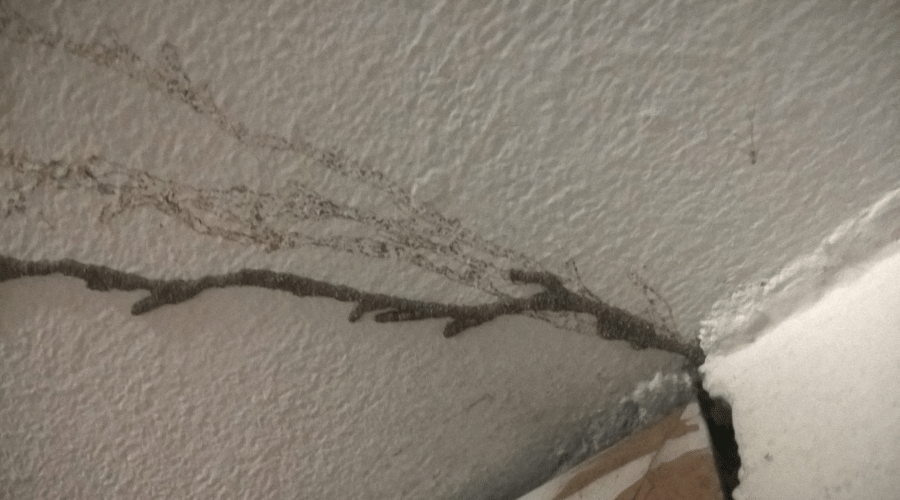
Types of Termite Trails
Not all termite trails are the same. Another reason why you shouldn’t destroy them – so that an expert can understand what the termites have been doing.
Here’s a quick overview of the different types of termite trails:
Exploration Tubes are the most common mud tubes. Termites build these to protect them as they search for wood and bring it back to the colony.
Drop Tubes are usually built from the ceiling, hanging straight down. They are made to create a direct connection from where the termites are currently digging to the colony below.
Swarm Tubes: These constructions are different from the others, often barely even tubes at all. They are built as a preparation area before swarming season, where the Alates (winged termites) will hang out.
Working Tubes: These tubes are used for traveling between parts of a colony, both below ground and above.
Common Questions
Do termite tubes mean you have termites?
Yes, mud tubes are only found if there is an active infestation. To confirm this, you can break open about an inch-long part of the tube and watch if you see any termite crawling around in it. If it gets repaired within about a day, that’s another confirmation.
What are mud tubes made from?
Termites build mud tubes with a mix of pieces of wood, soil, and their saliva. The result is a clay-like substance that becomes decently hard and resistant to both predators and wind, rain, and sunlight.
Why do termites build mud tubes?
Mud tubes are built to protect themselves from other animals and exposure to the elements. When they leave their underground colony to collect food (wood), these tubes are like protected tunnels getting them safely to the wood they are digging into.
Which termites build mud tubes?
Only subterranean termites build mud tubes. Specifically, the worker termites are responsible for this task. They scout for tasty wood, then build tubes to create a safe passage to the wood, and finally they start tunneling into the food source.
When do termites build mud tubes?
Mud tubes are built all year round. If there is wood directly connected to the soil, termites can dig into it directly. But if there is material they cannot dig through, like a concrete foundation, they need to build mud tubes on it to reach the wood.
How long does it take for termites to build and repair mud tubes?
Worker termites can build and expand mud tubes within hours, depending on the size and length. If your break a piece off an active tube, you can literally watch the insects repair the hole within minutes.
Where can you find mud tubes?
Mud tubes are mainly found on the outside walls of your house, from the ground up towards wooden elements. You can also find mud tubes in your basement, going up from the ground along the walls.
Rarely, you’ll even find them higher up – mud tubes can sometimes be found on ceilings, or even as high as the attic.

